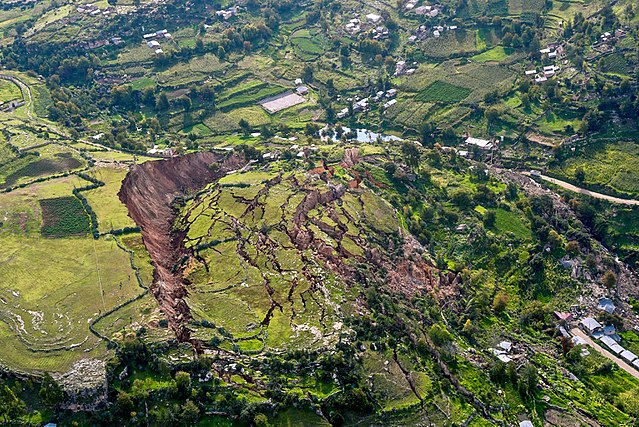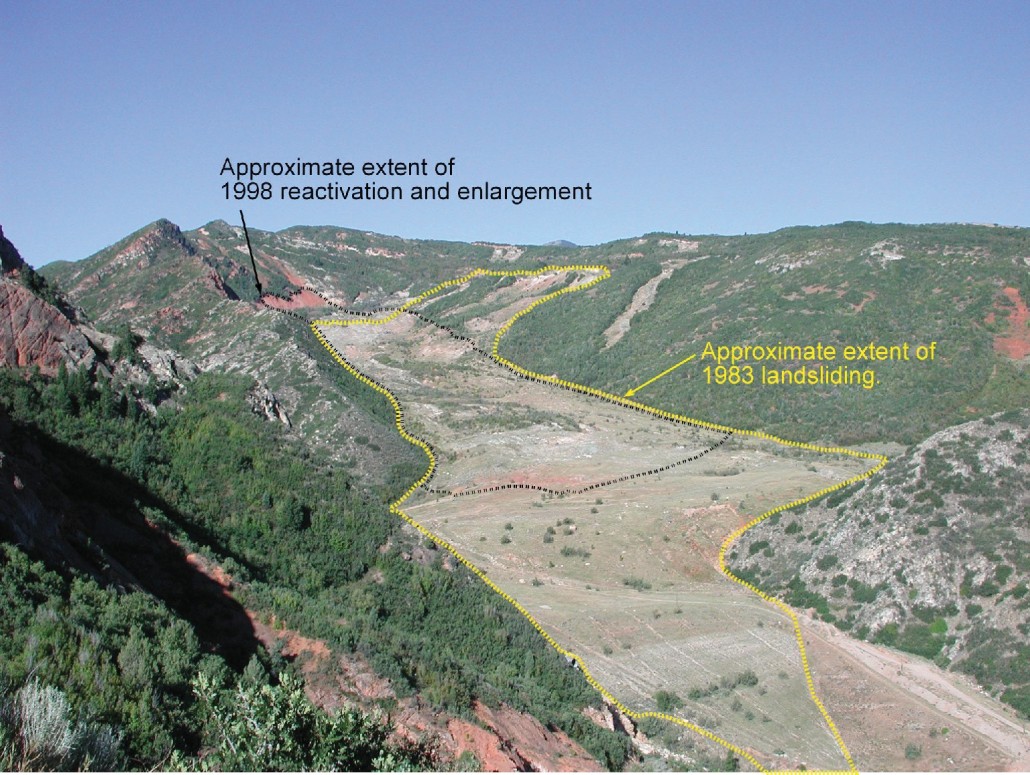 Cusco, Peru 2018 |
There are three
locations on a slope where a slide may be triggered.
There can be a slope failure, a toe failure, or a base
failure. Slope failures occur near the surface of the slope, when some mechanism causes a slope instability and pulls the soil down toward the valley floor. Toe failures occur at the bottom of the slope, at the toe. Toe failures can be caused by human construction, when the toe is excavated. They are also frequently caused by erosion of the toe by streams or rivers. Base failures occur at depth within the slope, when a weak layer which was deposited then buried by everything above it moves. Because the layer was deposited horizontally, it has a smooth and flat contact with the rock under it. Therefore, friction between the contacts is low. Slope failures are the smallest failures, only involving the surface layers of the slope. Toe failures are larger because they involve everything above the toe, the bottom of the slope. Base failures are massive, as everything above the weak layer, which is possibly very deep, is carried downhill. |
What are some of the mechanisms that cause slope failure? Earthquakes can shake the ground, causing it to condense and slide to the lowest point. Earthquakes cause slope failures for the same reason shaking a cereal box causes cereal to fall into the bowl. Water causes the most instability and slope failure. Water can permeate a slope, pushing the soil grains or rocks apart due to pore pressure. This greatly reduces friction, the only force holding the slope against gravity. Slope failures can occur after heavy rains over a prolonged period, such as in monsoon season in southeast Asia or along the Amazon River basin, or after heavy snowfall totals in mountainous regions as it melts, such as in Thistle, Utah. This was the most damaging landslide in US history. Let's take a closer examination of this slide. |
 Thistle, Utah 1983 |